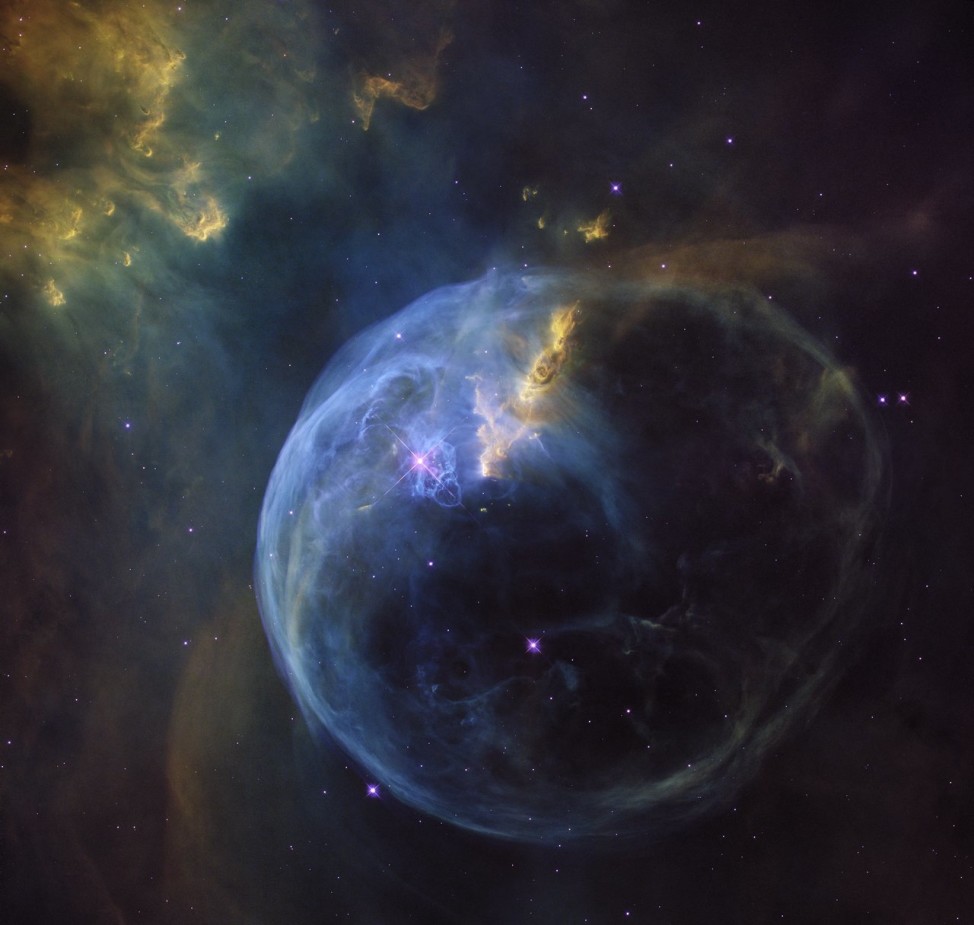
To celebrate the 26th anniversary of the launch of the Hubble Space Telescope a new image of NGC-7635 or the Bubble Nebular was released. (NASA, ESA, Hubble Heritage Team (STScI/AURA))
Sunday, April 24, 2016 will mark the 26th anniversary of the launch of the Hubble Space Telescope aboard the space shuttle Discovery mission STS-31. It was deployed from the shuttle’s payload bay the following day, April 25, 1990
Over its 26 years of service Hubble’s numerous discoveries and the breath-taking and detailed images it has gathered has provided scientists with incredible new insights into the universe.
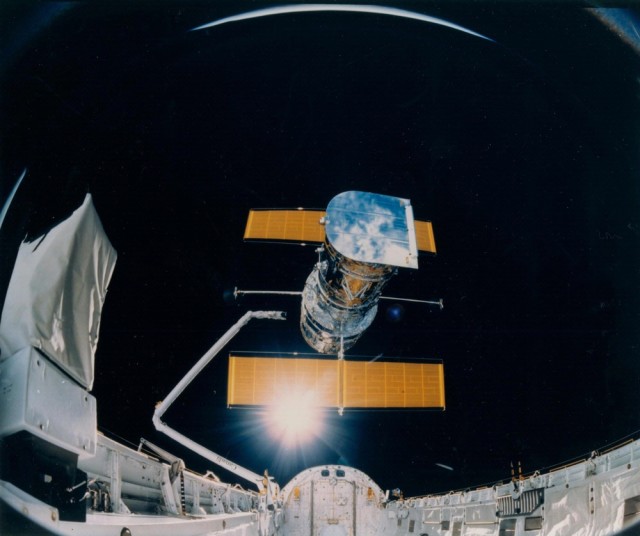
This photograph was taken by the STS-31 crew aboard the Space Shuttle Discovery and shows the Hubble Space Telescope being deployed on April 25, 1990, from the payload bay. (NASA)
The space telescope has also allowed us to look deep into space and time taking us back to as far 400 million years after the big bang.
But things didn’t start out so well for the Hubble.
Almost as soon as the space telescope was put into service – May 20, 1990 – scientists noticed that there was something wrong. The images it was sending back looked blurry and weren’t as sharp as they were supposed to be.
After analyzing the blurry images technicians realized its primary mirror was slightly misshaped with a flaw called a “spherical aberration.” The defect caused incoming light to focus on the wrong part of the mirror.
A scientific panel investigating the problem found the imperfection was made during the careful mirror grinding process. They found that an instrument used to make precise measurements was miscalibrated which caused the mirror to be ground slightly too flat.
To fix the problem the Hubble team decided that their new space telescope needed some eyeglasses.
So engineers and technicians came up with a corrective optics system called the or COSTAR. The Hubble’s new glasses were designed to compensate for the aberration and allow it to function as it was intended.
The crew of the space shuttle Endeavour mission STS-61 fixed the space telescope’s optical problems during its first planned servicing mission (SM1) in December 1993.
The procedure included removing and replacing its High Speed Photometer with the COSTAR system and replacing the space telescope’s original Wide Field/Planetary Camera with the more advanced Wide Field Camera 2 (WFPC2) – which was replaced by the Wild Field Camera 3 (WFPC3) in 2009. The astronauts also performed a number of other maintenance procedures on the Hubble as well.
At the time NASA referred to STS-61 as one of the most complex space missions it ever attempted. It took almost a year to train astronauts and technical staff to prepare for the first Hubble servicing mission.
There would be another four service missions in the years that followed, the last, SM4, being in May 2009.
To celebrate its 26th anniversary astronomers are featuring a Hubble image of NGC 7635 which is also known as the ‘Bubble Nebula’.
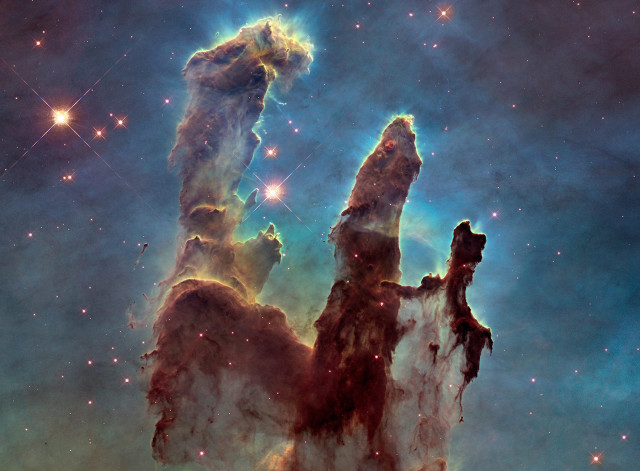
Hubble Space Telescope image of the Eagle Nebula’s “Pillars of Creation”, released 1/6/15. (NASA/ESA/Hubble Heritage Team)
Scientists say that it looks like an enormous bubble being blown into space by a super-hot, massive star.
“As Hubble makes its 26th revolution around our home star, the Sun, we celebrate the event with a spectacular image of a dynamic and exciting interaction of a young star with its environment, said John Grunsfeld, astronaut and associate administrator of NASA’s Science Mission Directorate at NASA Headquarters, in Washington, D.C. in a press release. “The view of the Bubble Nebula, crafted from Wide Field Camera 3 images, reminds us that Hubble gives us a front row seat to the awe inspiring universe we live in,” he said.
While the Hubble continues its work its advanced replacement, the James Webb Telescope (JWST), is set to be launched in 2018.
Compared to the Hubble, the JWST team says that it will look deeper into space to observe some of the earliest formed stars and galaxies in the universe and allow scientists to study how stars and planets are created.

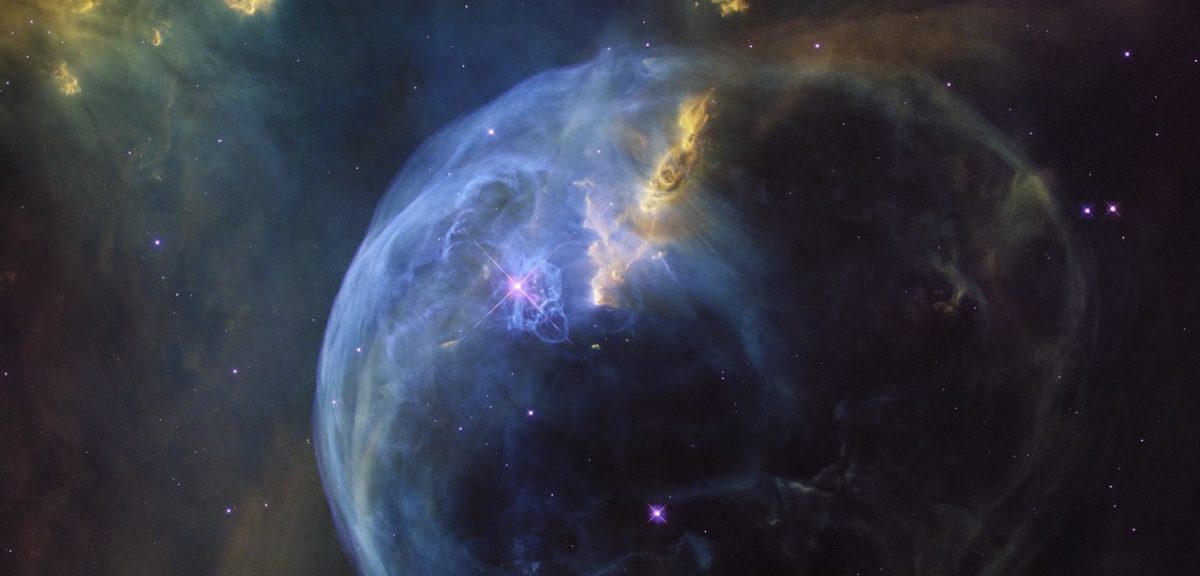
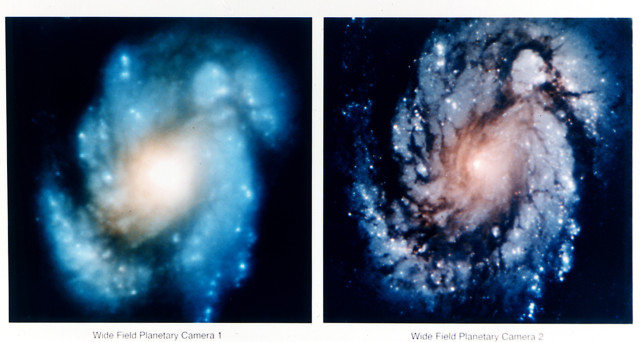





















The Hubble Space Telescope is more than a small step for mankind. Congratulations to all those who have been involved.